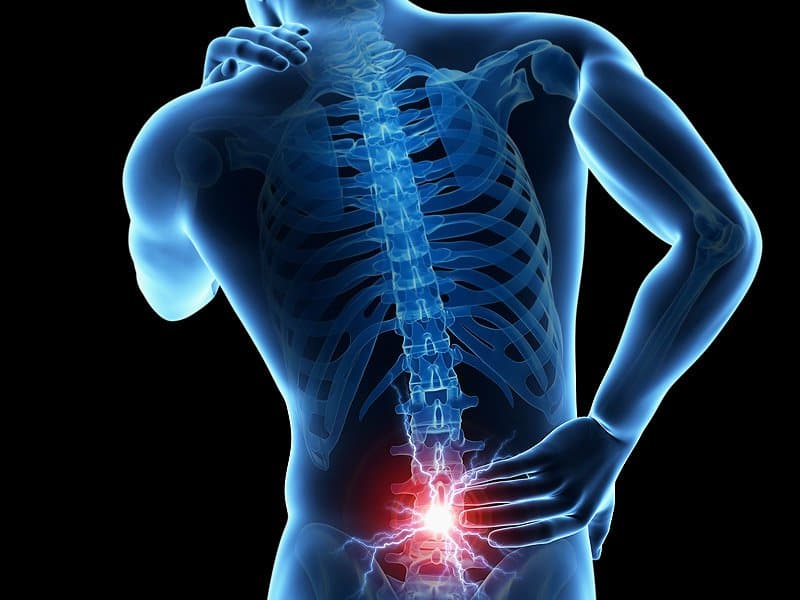
Repetition and Dysfunction : Minimizing Back Pain
Issues with joints or body parts can almost always be traced back to usage. When faced with a familiar task in a familiar environment, our habitual patterns of movement follow a particular chain of command. We clutch and are clutched by our history of doing. Chronic pain is the result of repetitive, normalized, and cultivated dysfunction:
A way to disrupt this automatic order of things is to alter the environment, task, or interaction with each. Consistently changing up what we do keeps us open to change. Novel movements, like novel problems, offer novel solutions. Once a successful solution has been performed and understood, forced repetition may develop another means of ingrained patterning, void of context and situational interpretation.
If repetitive routine stagnates and solidifies the way we self-organize, shouldn’t a lack of routine lead us toward a painless path?
New and different keeps us aware and engaged in the process. As we learn, we notice — asking whys and figuring out the hows. In doing so, we are able to create a series of mini-challenges and explorations specific to our interests and needs. Practice becomes both individualized and variable, rooted in feeling, pleasure, and curiosity. Playful movement keeps pain at bay and also offers a means to transition out of it. Self-limiting investigations allow us to find the precise progressions for our current predicament.
AN EXAMPLE: Novel Movements and Back Pain
1. The Pelvis, Abs, Low Back Triad
The spine is notorious for staying static and being resistant to change. Compression and stiffness compound into aberrant rigidity. The spine stays put because you’ve consistently instructed it to. Unravelling the pattern and reorganizing the sequence begins with examining the pelvis. The more you are stuck in anterior pelvic tilt, the more you must become familiar with posterior pelvic tilt:
Back tension typically means an absence of core tension. Note that posterior pelvic tilting should greatly engage the lower abs. The more the abs do, the less is required by the back to combat gravity and retain posture. Pelvic control precedes core control. Proper pelvic positioning is a priority for shifting stress from the back to the front.
2. Getting and Retaining Hip Extension
Hips that don’t extend rely on the low back to produce extension. The lumbar spine, however, is not anatomically designed to drive extension (neither in the spine nor the hips). Getting hip extension is not the same as challenging hip extension. Maintaining hip extension under changing conditions allows for greater hip utility, increasing access for future movements benefited by hip extension.
The hips are asked to bear more load as arm support lessens/adjusts.
3. Contrasting Positional Stability
Once an extreme has been countered by training its opposite, it is important to recognize whether one confine has been swapped out for another. The goal is to exist in capable comfort through all areas of the spectrum, not just on either end. Contrasting positional ‘truths’ gives us a greater understanding that our capacity has increased rather than simply shifted:
4. Prone Pressups and Redistributing Load
Prone pressups extend the spine against gravity and tend to place force into the lumbar extensors, aggravating many. Though modifications in the placement of the pelvis and hands can help alleviate these symptoms, the true culprit of motor control often gets overlooked. Below, I separate out the hips and shoulder blades to make a pinching pressup a pain free one that achieves greater range of motion:
The single arm holds help me distinguish competence between the two sides, and the reset allowed me to test if learning occurred. Unsegmented and without deliberate sequencing, the pinching did not return on the second attempt.
Another option to redistribute load away from the low back is to move it (and its connected hips) in another plane of motion. Left-right swaying or distraction during a pressup demands extension occurs further up the spine:
5. Supine Bridging and Redistributing Load
Bridging often puts force plus load (bodyweight) into the lumbar spine. If the low back has been programmed as an area of mobility instead of stability, it can place the body into a precarious predicament. To reduce load and change the fulcrum point to the thoracic spine, elevate the upper back. This set up also prioritizes active hip extension:
TO REVIEW:
- Repetition creates patterns and habits
- Rutted motor sequences and coordinations are often tied to pain
- Variability expands the awareness of options
- Novel movements enhance adaptability
- Pain makes you aware of ‘wrong’ and can help steer you toward a new ‘right’
- Pelvic tilt dictates core tension being either ab or back dominant
- A lack of hip extension places greater stress on the low back
- Dual function in extremes suggests increased capacity throughout the continuum
- Motor control is dictated by an order of events, and this order can be segmented and re-patterned
- Load and force can be manipulated through the environment
- The ability to find another way is a product of our practice




